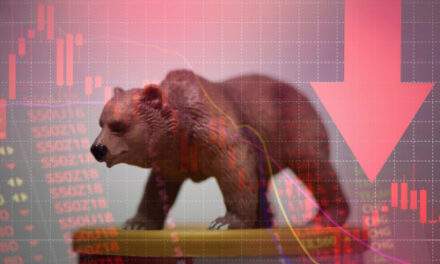Options trading is the greatest tool everyday investors can access, that many have never heard of.It’s the only dependable way to add leverage to any trading strategy, and quickly grow an account balance without subjecting yourself to needless risk.Our mission here at True Options Masters is to prove this to as many people as we can. So every week, here in Options Bootcamp, I’m reviewing the fundamentals on options.I’m starting slowly so you have a common base of knowledge. Last week, I started with the most basic of questions: What even is an option?This way, you’ll be able to grasp the most advanced strategies when we get there.This week, I want to highlight how options can help you trade both sides of the market…
Options Unlock the Market’s Full Potential
Like stocks, options prices move up and down over time. But options can be used to easily benefit from moves in either direction. It’s more difficult to benefit from price declines with stocks.If you think a stock’s price is going to fall, you can sell short. To do that, you place an order to sell the stock without owning the shares. Your broker will lend you the shares to sell and credit your account with the proceeds.For example, you could short 10 shares of Apple (AAPL) at $153. Your broker will credit your account with $1,530 and you owe your broker 10 shares of AAPL. Later, you will need to buy 10 shares of AAPL to pay back that loan.If AAPL falls to $140, you can buy 10 shares for $1,400. This results in a profit of $130 on the trade, less commissions and interest you pay on the loan while the trade was opened. That interest can vary from maybe 1% to 10% or more in some market conditions.On a short trade, if shares rise, you suffer a loss. If AAPL jumps 10% to $168, you would lose $150 on the trade. Or you could hold the position, hoping prices fall so you can breakeven. If you hold and prices continue rising, your loss grows.The risks of shorting a stock are high. That’s why most traders will never trade on the short side, and they limit themselves to just one side of the market’s potential.That can be costly in a bear market. And there’s no need to limit yourself to half of the market.
How to Trade Both Sides of a Market
To benefit from a decline with limited risk, use options.For AAPL, an option to benefit from a price decline costs about $500. If AAPL falls 10%, that option would be worth at least $1,000. If AAPL rises 10%, 30%, or even 100%, your loss can never be more than $500.Put options allow you to benefit from price declines. Puts give you the right to sell the stock at a defined price before the options expire. If you can use the put to sell the stock for a price higher than it’s trading, the put option has value.On the other hand, if you like AAPL, you can buy a call option. This gives you the right to buy shares of the stock at a defined price any time before the option expires. If AAPL goes up, you can sell the call option and take your profit. Just like with put options, the ability to buy AAPL at a price less than where it’s trading makes the call valuable.Those are the only two types of options. And they allow you to benefit from price rallies, sell-offs, or even trading ranges with certain strategies.Even though there are just two types of options, they can be confusing. Hand signals used by traders on the floor of the exchange offer a quick way to remember the two.

Source: ThomsonReuters.com
When a trader wants to buy, she holds her hands up, palms facing her chest and pulls her hands close. She’s calling for the shares to come closer.When selling, she holds her hands with her palms facing away from her body and pushes. She is putting the shares in someone else’s account.Options can always be explained with simple ideas like those hand signals. I’ll cover more detailed theories, in simple ways, over the next few months.But for now, it’s important to remember that options can adapt to the market — or maybe it’s better to say options can adapt to your market opinion.Options also allow you to know the risk when you place a trade. You can never lose more than you paid to buy the option. And options are generally inexpensive so the risks can be small in dollar terms.As you learn more about options, you may decide they should play a significant role in your trading account. So in future editions of Options Bootcamp, I’ll show you how to limit your risk while trading options, and advise what percentage of your overall liquid capital you should commit to them.Regards, Amber HestlaSenior Analyst, True Options Masters
Amber HestlaSenior Analyst, True Options Masters
Chart of the Day:Bitcoin’s Inflection Point
By Mike Merson, Managing Editor, True Options Masters

(Click here to view larger image.)
Bitcoin is nearing a key inflection point.Ever since November, bitcoin has been in a downtrend. Lower highs and generally lower lows.You could even call it a bear market, as it’s down 40% from its all-time high. (Though, bitcoin has seen much worse after blow-off tops.)However, bitcoin bulls have spent the last couple months making a deal with the bears to work out a bottom. We’re seeing a series of higher lows since late January, when bitcoin fell below $33k.Note, also, the coiled moving averages. There’s a lot of pent-up energy in bitcoin from all the choppy action. It’s likely going to make an explosive move, one way or the other, just as it’s nearing the apex of this triangle.Chartists might look at this and say, “oh, that’s a descending triangle, it’s going lower.” And you would be right… if we were talking stocks.But for some reason, in crypto price action, these patterns have a tendency to break to the upside. They form significant mid-term bottoms, as all the sellers have left the trade.I lean bullish here, but I’m more than happy to be wrong. I would see any lower prices in bitcoin as a long-term buying opportunity, especially if we breach the $35k level again.Just watch the apex of this triangle. It culminates at the start of April. We’ll have a good idea of what should happen with bitcoin by then.Regards, Mike MersonManaging Editor, True Options Masters
Mike MersonManaging Editor, True Options Masters










